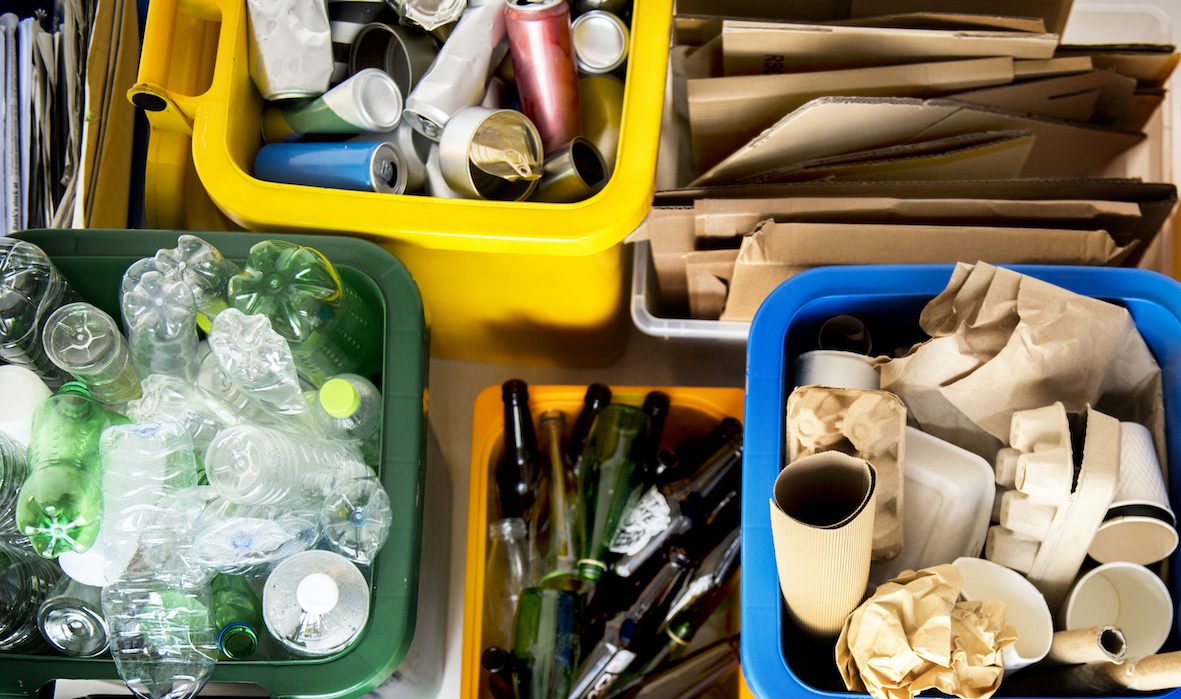Not all plastic is made equal.
In developed countries, most local authorities offer kerbside recycling services but the capacity for recycling varies across jurisdictions. In the developing world, recycling is mostly informal, meaning rates are relatively low.
Funnily enough, the colour of certain plastics can also influence recyclability. Recycling plants often remove coloured bottles from input materials as they jeopardize the clarity and transparency of the recycled plastic.
So, what else should we know? What can we recycle?
1. PET or PETE
- Beverage bottles
- Food containers
- Disposable cups

PET, or Polyethylene Terephthalate, is the most commonly recycled plastic.
Often found in plastic beverage bottles and bottle caps, it is a waterproof, tough, heat resistant and soluble plastic.
Its ideal use is for cold or warm drinks, but it cannot be used for hot drinks.
Most kerbside recycling schemes accept this plastic and its time to decompose can vary wildly depending on conditions. Most PET degrades in about 450 years.
Recycling rates vary. In South Africa, about 60% of the PET produced each year ends up getting recycled, while in the US the number is about half this.
2. HDPE
- Detergent bottles
- Shampoo bottles
- Plastic bags
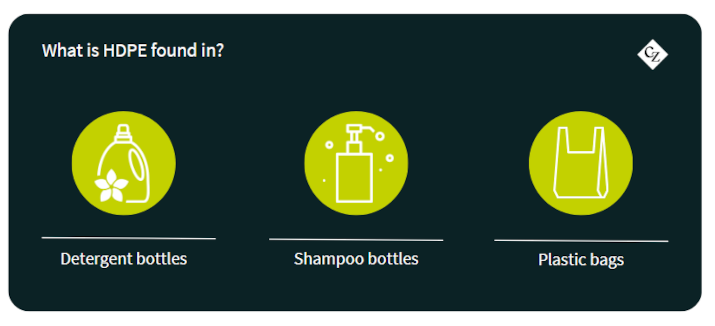
HDPE stands for High Density Polyethylene.
These plastics are generally flexible, waxy, waterproof, leak-free and withstand low temperatures, which is why they’re often used for liquid detergents and soaps.
Depending on the product, it can take between 60 years and 1,200 years to decompose, but again, most kerbside recycling schemes accept this plastic.
In the US, Greenpeace says about 12% of HDPE is recycled.
3. PVC
- Plumbing pipes
- Shrink wrap
- Children’s toys
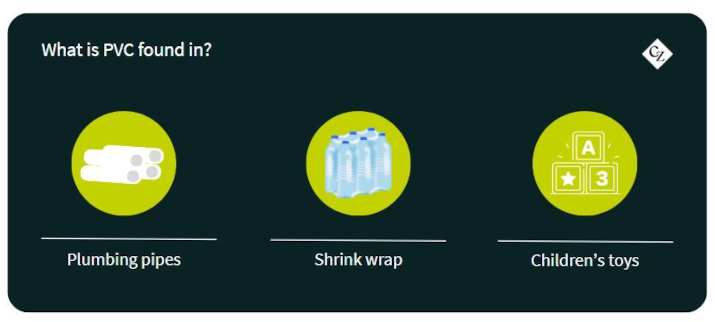
Polyvinyl Chloride (PVC) is the third most used type of plastic but it’s extremely difficult to recycle.
As a result, it’s often burned in incinerators. This emits dioxins and can result in these compounds leaching into landfills and groundwater. It’s extremely dense but it’s also cheap, durable and strong.
PVC, under perfect conditions, will never decompose. Despite this, kerbside waste collection services will rarely pick it up. As is stands, less than 1% of the PVC produced each year ends up getting recycled, but several specialist recycling options have emerged, including VinylPlus and VinyLoop, which are both working to recycle PVC.
4. LDPE
- Bread bags
- Garbage bags
- “Paper” milk cartons

HDPE’s cousin, Low Density Polyethylene, is much trickier to recycle. It’s a soft, flexible, lightweight plastic, likely to be found in bags or films. LDPE is one of the most commonly used forms of plastic, especially within the food industry.
Again, it’s unlikely that kerbside waste collection services will pick it up. Some specialist services will collect LDPE and supermarkets, such as Tesco in the UK, are launching a collection program for this type of plastic.
LDPE takes between 500-1,000 years to decompose, and around 5% of that produced each year ends up getting recycled. With no exposure to light (i.e. when sent to landfill) these products may never break down).
5. PP
- Yoghurt containers
- Straws
- Hangers

Polypropylene (PP) is a highly versatile polymer. It’s resistant to many chemical solvents, complicating the recycling process. However, recent studies suggest PP has the potential to be sustainable if the correct waste management processes are followed. But there are limits: PP can supposedly be reused four times before its structural integrity is compromised.
Even so, more and more kerbside collection facilities are collecting this plastic, which is relatively easy to recycle.
Still, just 3% of the PP produced each year ends up getting recycled, and it can take between 20 and 30 years to decompose.
6. PS
- Disposable food containers and cutlery
- Razors
- Packing peanuts
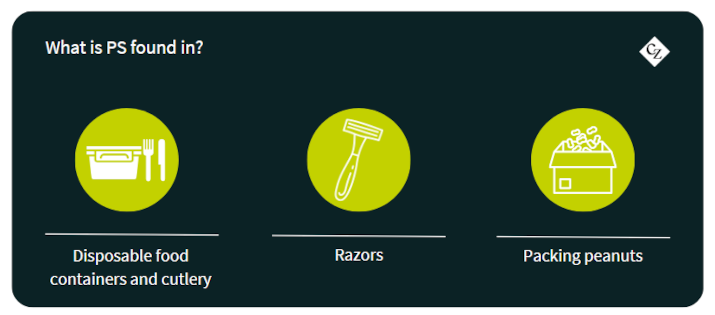
Polystyrene (PS) is difficult and expensive to recycle as it’s bulky and therefore tricky to transport. The old version is not recyclable, but a new expanded polystyrene (EPS) is.
Its properties mean most recycling is currently carried out for commercial waste. Certain processes are emerging, such as granulation for low-density polystyrene, that can separate the beads before pressing them together to make new products.
Still, very few authorities accept this in mixed kerbside recycling and, if they do, it won’t likely be recycled. Some councils have the facilities to recycle EPS and retailers may accept your polystyrene to reuse.
Around 34% of the world’s PS is recycled each year, and it takes 50 years to decompose.
7. OTHER
- CDs
- Baby bottles
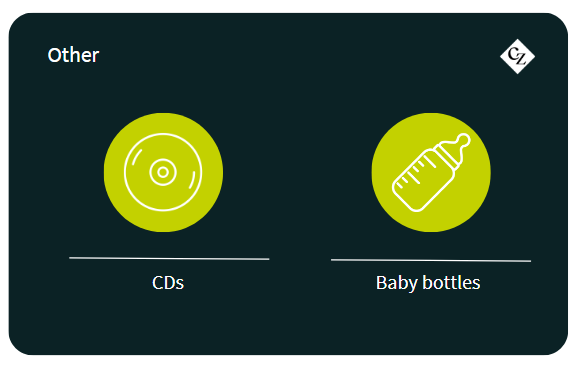
No.7 is the catch-all category, under which everything else falls. Whether it can be recycled depends on the specific material it’s made from. Bio-based plastics made using polyactic acid can be sent to commercial composting facilities, though it’s not advisable to do so in home compost as it’s not 100% biodegradable.
Many of these plastics are extremely difficult to recycle, so think about whether you can reuse, upcycle or donate your plastic marked with this stamp. Other No.7 plastics will sometimes be collected by kerbside recyclers.
Nevertheless, a negligible amount of the plastics that fall into this category are recycled, and the majority never decompose.
This Czapp Explainer was Published on the 16th September 2021.
For information on our consultancy offering and other projects, please contact SGeldart@czarnikow.com.
